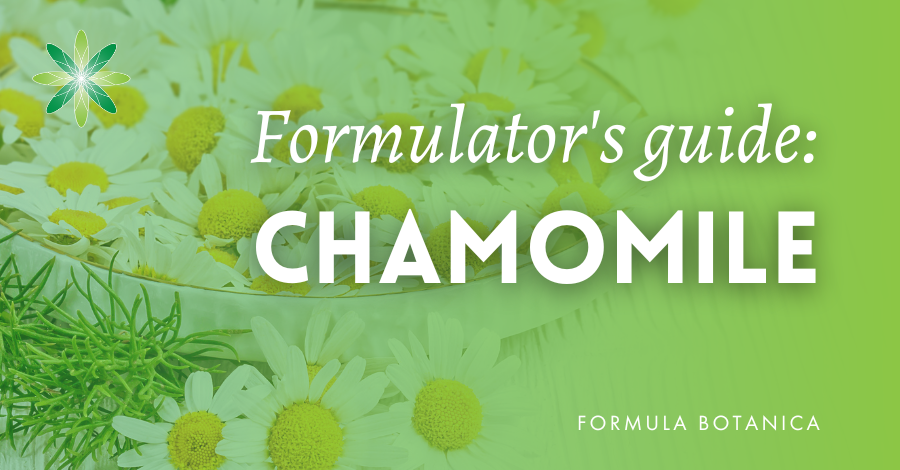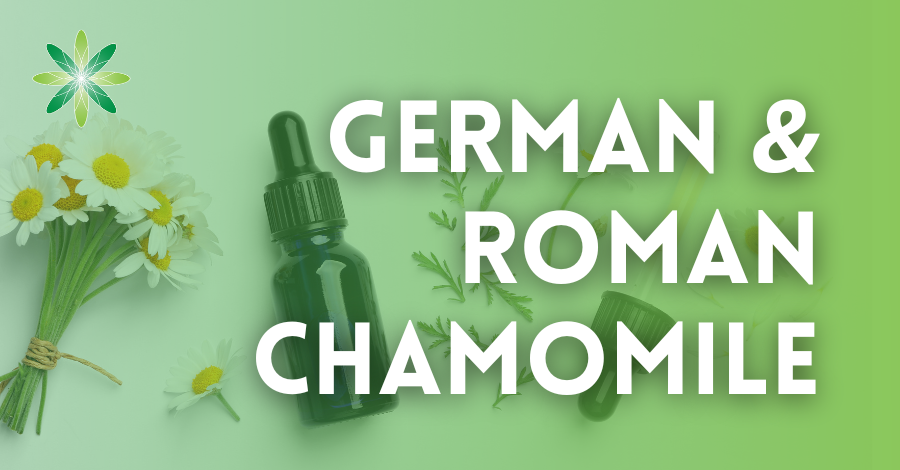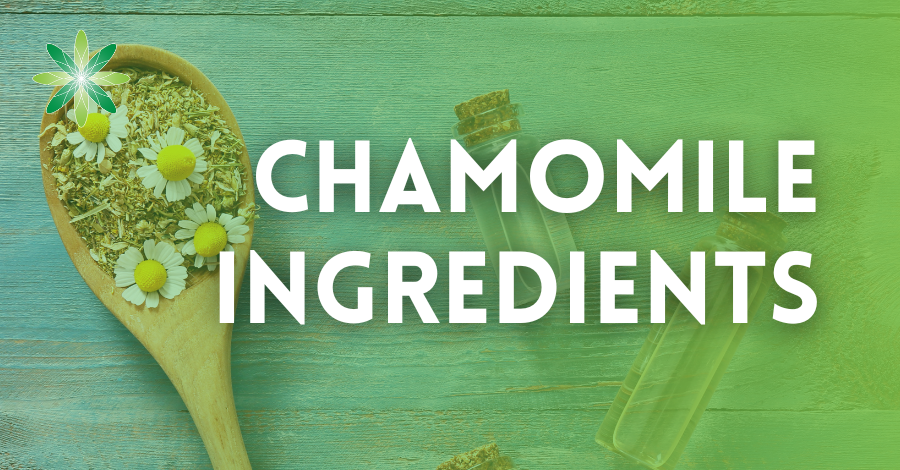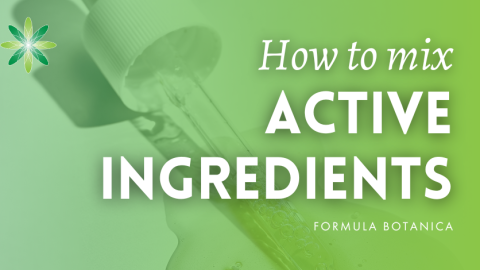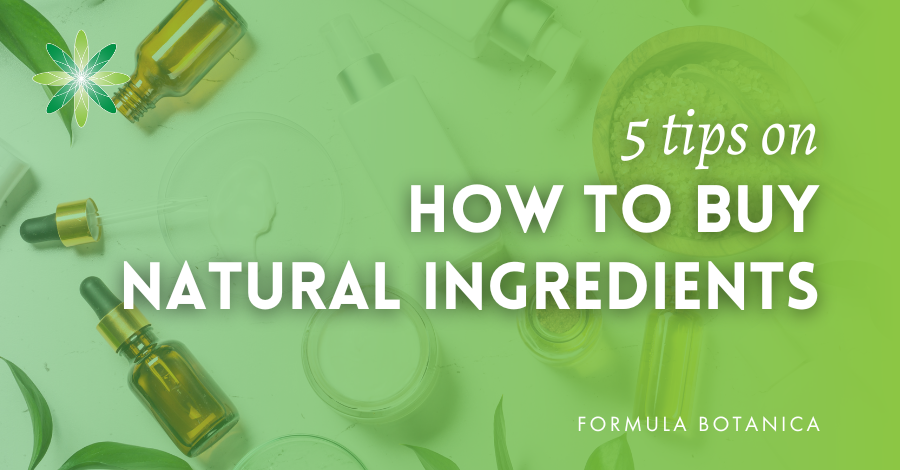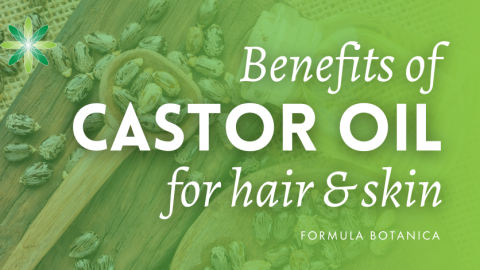Roman and German chamomile – can you spot the differences? In this guide, we take a closer look at chamomile, including its history in pharmacopeia, the differences between Roman and German chamomiles, the beneficial chemical compounds found in each genus, and the various cosmetic ingredient types chamomile creates. Whether you’re a beginner or an experienced formulator, this guide will provide you with valuable insights on how to incorporate chamomile into your natural cosmetic formulations.
Chamomile in brief
Chamomile, a small, delicate flower that resembles a daisy, has been a popular herbaceous plant for centuries. Its calming and soothing properties have made it a staple in traditional medicine, and now it is widely used in the natural cosmetic industry. From calming to reducing inflammation and soothing irritated skin, chamomile has earned a place in the formulation of many natural cosmetic products. As we will see, chamomile is a versatile ingredient that can be used in various formulations.
History of Chamomile in Pharmacopeia
Chamomiles have a long and rich history of use in traditional medicine and cosmetics. Ancient civilisations, including the Egyptians, Greeks, and Romans, used chamomile for its various medicinal properties. In fact, it was considered one of the nine sacred herbs by the Anglo-Saxons and was used to treat a variety of ailments, including fever, inflammation, and digestive issues.
In traditional medicine, chamomile has been used to treat a variety of ailments, including anxiety, insomnia, and digestive issues. The herb’s calming properties have made it a popular ingredient in teas, tinctures, and other natural remedies.
In modern cosmetics, chamomile is available in many ingredient forms, such as essential oils, powdered extracts, and hydrosols, and is a versatile ingredient that provides a range of skincare benefits. It is often used in skincare products for its soothing and calming properties, making it an excellent choice for sensitive or irritated skin. We cover these and its other properties later.
Differences Between Roman and German Chamomiles
Chamomile is the common name of some different daisy-like herbs from the Asteraceae family, the main ones being German chamomile (Chamomilla recutita) and Roman chamomile (Anthemis nobilis).
German and Roman chamomiles are the two most common species of chamomile used in natural cosmetics, and while they share some similarities, they also have some distinct differences in terms of their physical and chemical properties.
However, they share active constituents that help soothe sensitive and problem skin. This makes them both beneficial in skincare products aimed at sensitive skin that is prone to inflammation and for use in a wide range of products such as cleansers, moisturisers, balms, serums, massage oils, and other skin or haircare products.
Brief overview of the two species
Roman chamomile (Chamaemelum nobile syn. Anthemis nobilis) is a creeping, low-growing perennial plant with small, daisy-like flowers. Also known as English chamomile or ground apple, it is native to western Europe and North Africa and is widely cultivated for its essential oil. Its tea is bitter, whereas that of German chamomile is sweeter.
German chamomile (Chamomilla recutita syn. Matricaria recutita syn. Matricaria chamomillais) is an annual plant that grows up to 60cm tall and is native to Europe and western Asia. German chamomile is also cultivated for its essential oil and is often used as a medicinal herb. In fact, the name Matricaria comes from the Latin matrix, meaning “womb”, and was given because M. recutita was traditionally used to treat gynaecological disorders.
Physical Differences
One of the key physical differences between the two species is the appearance of their flowers. Roman chamomile has a small, white flower with a yellow centre, while German chamomile has a larger, white flower with a cone-shaped yellow centre. In terms of aroma, Roman chamomile has a sweet, fruity, warm and herbaceous scent, while German chamomile has a strong, sweet, herbaceous and hay-like aroma.
Chemical Differences: Roman vs German chamomile
The flowers of both chamomiles contain many different active constituents, such as flavonoids, coumarins, mucilage and volatile oils, but the two species also have some chemical differences that are important to consider when formulating natural cosmetics. In brief, it’s worth noting that Roman chamomile essential oil contains a high level of esters, which give it its sweet, fruity aroma. German chamomile essential oil, on the other hand, contains a higher level of chamazulene, which gives it its distinctive deeper blue colour and it is known for its anti-inflammatory properties.
Let’s look at these chemical compounds in more detail.
Chamomile’s compounds of cosmetic value
German chamomile essential oil can be classified into four different chemotypes, depending on its major constituent, which may be alpha-bisabolol, bisabolol oxide A, bisabolol oxide B, or bisabolone oxide.
Roman chamomile essential oil is mainly composed of angelic and tiglic acids, esters, farnesene, and alpha-pinene, containing lower amounts of chamazulene than German chamomile essential oil.
Hydrophilic extracts will mostly contain flavonoids, phenolic acids, coumarins, and polysaccharides, while lipophilic extracts will present higher amounts of sesquiterpene derivatives, such as alpha-bisabolol and matricin, for example. Even though the active components of these extracts are different and have various ways of acting, most of them present anti-inflammatory and calming properties, and as they help to alleviate irritation, they are a good choice for products directed at sensitive skin.
While both species of chamomile have similar benefits for the skin, they may be better suited for different types of cosmetic formulations. Roman chamomile, with its sweeter, fruity aroma, is an excellent choice for products that are designed to calm and soothe the skin, such as toners, mists, and facial serums. German chamomile, with its stronger anti-inflammatory properties, may be a better choice for products that are designed to reduce inflammation and irritation, such as balms, eye creams, and face masks.
Chamomile blue: chamazulene
Both German and Roman chamomile contain matricin, a sesquiterpene that is converted to chamazulene during the process of distillation. Chamazulene is present in higher concentrations in the German chamomile essential oil and is responsible for its deep blue colour. It is also a determinant of good-quality oil. In the cold-processed CO2 extract of German chamomile, matricin is still present.
Matricin and chamazulene present excellent anti-inflammatory properties, but the mechanism of this activity is still not entirely understood. Chamazulene has also been shown to possess anti-allergy effects.
As chamazulene is very prone to oxidation, remember to store your chamomile essential oil in dark, airtight containers, protected from the heat.
Types of chamomile cosmetic ingredients
As both varieties have water- and oil-soluble active constituents, you come across a wide variety of cosmetic ingredients derived from chamomile.
Hydrosols
Both varieties provide hydrosols, so check the INCI to find out which you are buying as their aroma profiles will vary, as we noted above. They are both colourless, transparent liquids that can be used up to 100% in cosmetics for skin conditioning and fragrance. They are ideal for adding to or replacing part of a water phase in emulsions, toners, cleansers, gels, and other water-based products.
German and Roman chamomile essential oils
The essential oils of Roman and German chamomiles differ in aroma and colour. German chamomile essential oil is a deep blue to blue-green, semi-transparent, slightly viscous liquid. It is more herbaceous and stronger in scent than Roman chamomile essential oil. The latter is usually a pale yellow colour but can be a light blue or green when freshly distilled. Again, it has a sweeter, fruity, warm aroma.
They are insoluble in water unless you are using a solubiliser or surfactant in your formulation. Roman chamomile is more soluble in ethanol than the German genus, and both are, of course, soluble in oil. As with other essential oils, you typically add them in the cool-down phase of hot-process formulations below 40°C.
Infused chamomile extracts
Glycerites and macerates are popular ways to include the skin-beneficial properties of chamomile in cosmetic formulations. Hydrophilic compounds are extracted into glycerites, which use glycerine as the carrier, and lipophilic compounds are macerated into vegetable oils such as sunflower, sweet almond, and so on.
For more on how to make and use glycerites and macerates, see our guides:
The formulator’s guide to glycerites in skincare
How to make macerated oils
Chamomile CO2 extract
Created from German chamomile, the CO2 extract is a dark green-brown paste with the typical aroma of this genus. It is less easy to handle than its essential oil counterpart, requiring heating (try in a bain marie) or pre-dissolving in a carrier oil. It is used at around 0.1-0.3% in formulations and is soluble in oil and ethanol only.
Chamomile powdered extracts
A pale yellow-brown colour, chamomile powdered extracts can be used in facial masks, cleansers, and exfoliators. They have a faint, sweet, herbaceous aroma.
Chamomile in natural cosmetics: conclusion
In conclusion, chamomile is a versatile and valuable ingredient for natural cosmetic formulators. Its long history of use in traditional medicine and cosmetics highlights its numerous benefits for the skin, including its anti-inflammatory and calming properties.
When formulating natural cosmetics, it’s important to consider the differences between the two species of chamomile – Roman and German chamomiles – and their physical and chemical properties. Roman chamomile is an excellent choice for calming and soothing the skin, while German chamomile is better suited for reducing inflammation and irritation.
Chamomile as a cosmetic ingredient comes in various forms, including hydrosols, essential oils, powders, and oil-soluble extracts, making it a versatile and popular ingredient in many skincare products such as toners, mists, cleansers, facial serums, eye creams, and face masks.
With its rich history and numerous benefits for the skin, it’s no wonder that chamomile remains a popular choice for natural cosmetic formulators today.
Further reading on chamomile
Johnson Jr et al., 2018. Amended Safety Assessment of Chamomilla recutita-Derived Ingredients as Used in Cosmetics.
Johnson Jr et al., 2017. Safety Assessment of Anthemis nobilis–Derived Ingredients as Used in Cosmetics.
Singh et al., 2011. Chamomile (Matricaria chamomilla L.): An overview.
FREE TRAINING
Learn how to become an
Organic Skincare Formulator
FREE TRAINING
How to become an
Organic Skincare Entrepreneur
FREE TRAINING
How to become an
Organic Skincare Entrepreneur
Leave us a comment

Liz was Formula Botanica’s Content Coordinator between August 2020-2024. Liz worked as a professional blogger, journalist and site developer for many years and was also part of the Formula Botanica student community. Read more about the Formula Botanica Team.

